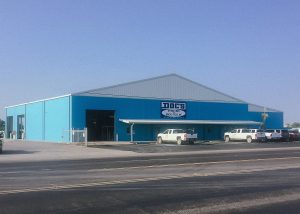The saying about the weather—if you don’t like it, just wait a minute, it’ll change—has become interchangeable with oil prices. Actually, oil prices tend to change even if you do like the current ones.
The last two years have pelted the industry with everything from the tornadoes of negative prices to the sunshine of triple digits. Oilfield rental companies like Graco Oilfield Services and Doc’s Reverse Units and Rental Tools have ridden those storms and are now thriving.
The Doc Is In for Three Generations
Doc’s came into being in the late 1940s, meaning oilfield ups and downs are nothing new to the company. Current Executive VP Josh Bryant’s grandfather Buster Bryant purchased the Monahans-based firm from founder Doc Eakins in 1969, making Josh the third generation of his family to work the business. Josh’s father, Larry, added his name to the firm in the 1970s, and Josh himself came on board about four years ago.
While he pursued a different oilfield career for a while, Josh Bryant allows that “I’ve always had it in the back of my mind that someday I would come into the business. I literally grew up around Doc’s.” With two previous generations in the business, growing up as part of Doc’s would appear inescapable.
After getting a petroleum engineering degree from Texas Tech, Bryant spent about 20 years working for a variety of operators internationally and domestically. In recent years, with his father nearing retirement age, Bryant decided to bring his operator-side experience to the family business.
Spreading Across the Basin
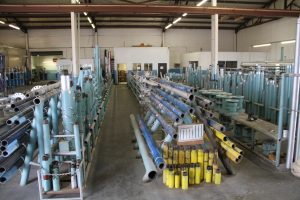 The company’s 20 employees cover all 24 Basin counties including New Mexico. Bryant lists Lubbock to the north, Alpine to the south, west to Del City, and east to San Angelo as examples of the distances they’ve traveled for work.
The company’s 20 employees cover all 24 Basin counties including New Mexico. Bryant lists Lubbock to the north, Alpine to the south, west to Del City, and east to San Angelo as examples of the distances they’ve traveled for work.
As the name indicates, “Reverse units are the bedrock of our company,” Bryant said, but their offerings include a long list of things like fishing tools and services, blowout preventers, hydraulic pipe laydown machines, spools, flanges, pipe-handling tools, and more.
Doc’s came through the recession intact, and has seen great improvement over the last year. Right before the downturn, Bryant noted, “A lot of operators were still maintaining project-type work. They had 10-20-50-well programs of either cleanouts or recompletions or whatnot.” After the bottom dropped out, only the most essential tasks continued, well into 2021.
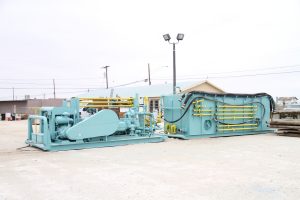 Some project work that had been planned for 2020 began to come back into view in 2022, but still not to the pre-pandemic levels. Bryant blames the slow recovery, at least in part, on the widely reported supply chain and labor shortages.
Some project work that had been planned for 2020 began to come back into view in 2022, but still not to the pre-pandemic levels. Bryant blames the slow recovery, at least in part, on the widely reported supply chain and labor shortages.
As 2023 unfolds, the Bryants are expecting activity to continue to grow. “We have plans to purchase some new equipment, [and to] potentially add some pumps and some other product lines.”
Continued growth of the industry as a whole depends on outside investment, he feels. “As large-scale investment begins to trickle back to the the industry, to the operators, then that puts our services and products in higher demand, which helps us, and helps everybody,” he observed.
Graco Feasts on DUCs
A well-timed return to basics has paid off in strong business growth for Graco since oil patch activity has returned, said the company’s Vice President of Sales, Marketing, Business Development, Mark Mixon. Graco’s rental lines include most phases of the oil patch: drilling, completion, production, and plugging/abandonment.
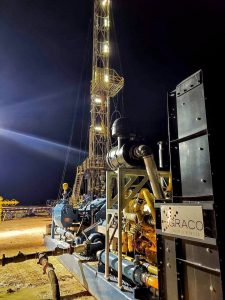
Drilling plugs at 4bpm and 6,000 psi, Graco delivers a completion drill out in the Permian Basin with its 1100 HP pump package.
About three years ago—just about the time of the Pandemic—Graco began to refocus personnel and capital expenditures on its original core business of “being a fishing company. We’ve significantly grown our market share in fishing—in both fishing on the drilling rig and on cased-hole fishing, which would be the production workover side,” he said.
Their greatest growth last over the last year has been in drilling and production workovers. “Some of that is due to our change of focus as a company. But I also feel like the reduction in DUC wells, the drilled and uncompleted, that number has been slashed to a recent low.”
Data from the U. S. Energy Information Administration (EIA) backs this up. Nationally, the agency’s October 2022 Drilling Activity Report1 noted “the number of drilled but uncompleted wells (DUCs) in the United States fell to 4,333 as of September 2022, the fewest since at least December 2013, when we started estimating the number of DUCs.” For the February 2023 report, the national number stands at 4,671, still very low when considering numbers had risen to more than 8,000 in September 20202. Permian DUC numbers have also fallen precipitously.
Refocusing on fishing was the right decision at the right time. As equipment becomes more costly and less available due to supply chain issues, operators are less likely to abandon equipment downhole—creating more fishing jobs. Bottom hole assemblies, directional drilling tools, logging tools and others are the most common fishing targets. “Our growth in open-hole fishing has jumped exponentially. So for us as a company to get back to our roots and for the industry to decide they needed to spend a little bit more time and effort fishing for things was really good timing for us,” said Mixon.
Speedy fishing is also of the essence because any drilling delay pushes back production, which costs producers in cash flow.
Something Old, Something New
A return to the Days of Future Passed does not preclude going Back to the Future for Graco. About a year and a half ago the company added a new service to through-tubing and fishing and motors. Looking for the latest motor technology, they connected with downhole tool maker Varel Energy Solutions and some other companies for motors, agitators, and other related equipment. “We’re actively participating in the through-tubing business now, either deployed by coil or deployed by pipe. That mostly manifests itself on the completion/drill out after the frac is done, but it also spills over into fishing on end-of-coil” and in other areas, he said.
While Graco’s fishing rentals are helping clients survive the supply chain issues, the company also focusing internal energy on the issue, in many of the same ways. “We’re spending more time and effort in repairing things,” he said. They’re more focused on staying ahead of small repair issues as they arise.
Overcoming the Supply Chains that Bind
Supplies of oil country tubular goods became scarce and expensive last year when the U.S. Department of Commerce and the U.S. International Trade Commission implemented antidumping import restrictions3 against those and other products. These regulations preclude imports of those items from Argentina, Mexico, and the Russian Confederation.
As a result, said Mixon, “The local mills and the local providers doubled their costs and their lead time. So people couldn’t get casing, they couldn’t get drill pipe, they couldn’t get rental tubing.”
To overcome tubing shortages, Graco connected with a vendor ofering a new repair technology designed to greatly extend the life of existing supplies. “We’re still ordering new, but a new order of tubing’s going to be nine months out—and the price doubled,” he said.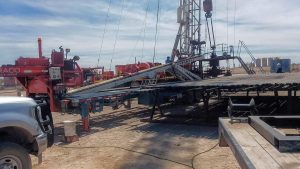
Graco also scoured yards in all the basins they serve—including the Rocky Mountains and the Anadarko—looking for unused/underutilized assets that could be relocated has also helped. All those were sent to the most active basin, the Permian.
The company greatly boosted its footprint in the latter in January of 2020, when they acquired the fishing and rental division of Gravity Oilfield Services—previously known as Globe Energy. “That doubled our footprint. Then we opened another store organically.”
That purchase being right before the Pandemic, Graco had a hard time at first. However, they spent the downtime refining and consolidating the business, and preparing for the inevitable return of activity. So when that did happen in the latter part of 2021, they were well prepared. “It’s been a whirlwind ever since,” Mixon noted.
Hiring and Training
On the employment side they’re thinking creatively as well, taking oilfield veterans of other jobs and retraining them to fill current openings. “We are continuing to seek out staffing both with experience and also candidates for training—and we’ve really had to focus more and more on training.”
For example, a driller or tool pusher “is a great candidate to become a fisherman. We’ve been actively doing that and with good success,” he said, noting that all the experience fisherman already have a job, so an employer either has to run up the salary scale for existing fishermen or find new ones.
Weathering the oilfield’s constant price storms is a fact of life for people in he patch, and Graco and Doc’s have not only survived, they have thrived.
1 https://www.eia.gov/todayinenergy/detail.php?id=54399&src=email
2 https://www.eia.gov/petroleum/drilling/pdf/September_2020_Supplement.pdf
3 https://tinyurl.com/3nr6etx5
Paul Wiseman is a freelance writer in the energy sector. His email address is fittoprint414@gmail.com.










